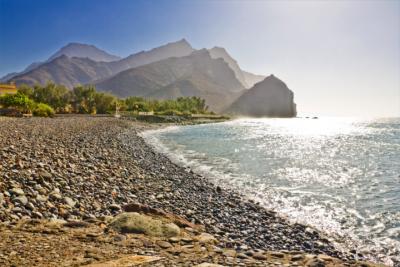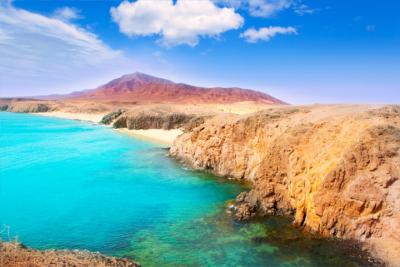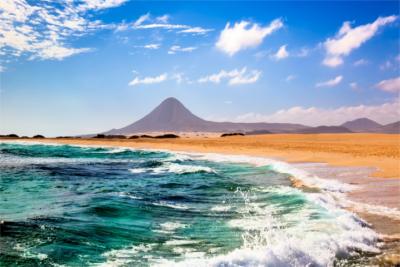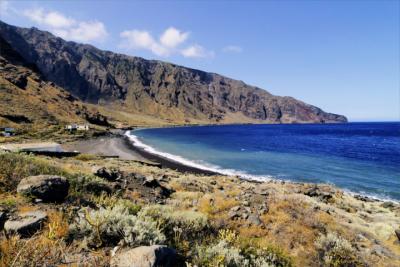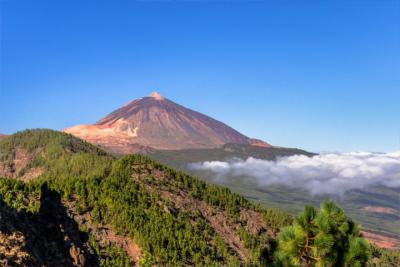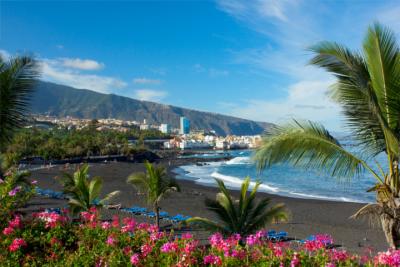Travel Offers
Travelmyne Featureprint
Distance
Canary Islands - The Islands of Everlasting Spring
The Canary Islands are in season all year long due to their warm temperatures. Lovers of nature, hikers, beach holidaymakers and party-goers will enjoy holidays on the Canaries.

Geography - Diverse Volcanic Islands
The Canaries are an island group in the Atlantic Ocean, located south-west of Spain and north-west of Africa. It is one of Spain's 17 autonomous communities and comprises seven main islands altogether: Gran Canaria, Lanzarote, Tenerife, Fuerteventura, La Palma, La Gomera und El Hierro. The climate on the islands is constantly warm. It is rarely hotter than 28 °C in summer and in winter, temperatures do not usually fall below 15 °C. Due to their 300 sunny days per year and their pleasant climate, the islands are also called the "Islands of Everlasting Spring".

Nature - Volcanic origin and a diverse flora
The Canaries are characterised by a fascinating landscape. They emerged 23 million years ago and are of volcanic origin, which is apparent from the landscape in several areas. Lava fields (e.g. Malpais Grande on Fuerteventura) and caves (e.g. Cueva de los Verdes on Lanzarote) are part of the islands' landscape and make them look barren and dry. Nevertheless, the Canaries offer a highly diverse flora. About 2,000 different species of plants vegetate the islands, 500 of which do not grow in any other place. Birds and reptiles are part of the local fauna and several types of birds can only be found on the Spanish archipelago. There are 146 conservation areas (five of which are part of the World Heritage of the UNESCO) as well as 11 nature and 4 national parks on the Canaries. Well-known national parks are, for example, the Timanfaya on Lanzarote, the Garajonay on La Gomera and the Teide on Tenerife. The Teide National Park accommodates Spain's highest mountain Teide (Pico del Teide) with 3,718 metres of height. Other worthwhile and impressive natural wonders are the juniper grove El Sabinar on El Hierro, the lava cave Cueva del Llano on Fuerteventura and the basalt columns Los Organos on La Gomera. Furthermore, the La Palma Biosphere Reserve constitutes a breathtaking natural experience.

Culture - Whistled language and wrestling matches
The Greeks and Romans reported on the Canaries and called the island group "the happy islands". The archipelago's indigenous inhabitants are the Guanches. This term originally referred to the population of Tenerife but it was soon used for the inhabitants of the other six Canary Islands as well. This tall, fair-skinned tribe is of interest to historians to the present day. There is a Canarian Museum in La Palmas in which you can follow the tracks of these native inhabitants. A special cultural treasure passed down by the Guanches is the whistled language El Silbo, which still exists on La Gomera and is taught at school again. Culture, old traditions and customs play a major role on the Canary Islands and are part of many festivities and events. One example is the Canarian string instrument timple. Other time-honoured traditions are cockfights or the Canarian wrestling match Lucha Canaria. Furthermore, the Canaries offer a number if cultural sights. The city centre of San Cristóbal de La Laguna on Tenerife (a UNESCO World Cultural Heritage site), the colonial town Teror on Gran Canaria and the seaport town Arrecife on Lanzarote are only a few of the many worthwhile places on the Canary Islands. Cultural attractions such as the Pyramids of Güímar (Tenerife), the salt gardens of Salinas del Carmen (Fuerteventura) or the cactus garden of the artist César Manrique (Lanzarote) fascinate many visitors.

Experience - Salty potatoes and exuberant parties
Tourists can taste many culinary delicacies on the Canary Islands. Examples are the many fish dishes (e.g. kaldereta, sancocho canario), baked goods, desserts (e.g. platanos fritos, morcillas dulces "sweet black pudding") as well as sauces. The Canarian wrinkly potatoes (papas arrugadas), which are served as a side to many meals, are particularly popular. Boiled in salt water in their jackets, the potatoes gain their typical appearance. The spicy mojo picón and the flour gofio, which is produced on the Canaries, are ingredients of many dishes. Therefore, you do not find typical products and popular souvenirs in big shops but rather on food markets. First-rate wines, banana liqueurs, rum or special Canarian sweets present great presents for family and friends. Parties and nightlife are celebrated exuberantly on the Canaries. Tourists can enjoy their party mood in a great variety of pubs, bars, clubs and discos. No matter if you want to end your day with salsa music, folklore or charts, there is something for everyone. The islands Tenerife, Lanzarote, Fuerteventura and Gran Canaria are known for their wild and lively nightlife. On La Palma, La Gomera and El Hierro, on the other hand, travellers rather watch and participate in traditional festivities.

Activities - A great variety of leisure-time activities
Besides the classic beach holiday - for example on Lanzarote, Tenerife, Gran Canaria or Fuerteventura - the Canary islands are also suited for hiking, cycling, mountain biking, windsurfing, surfing, paragliding and diving. Hikers and lovers of nature are in good hands on La Palma, La Gomera and El Hierro because these islands are less developed for tourists and offer more unspoiled nature. However, you can also go hiking on Tenerife. Visitors can marvel at the breathtaking mountainous landscape of the Canaries on a hike through the Macizo de Anaga, the Teno massif (Macizo de Teno) or the Teide.

Information
You best arrive on the Canary Islands by plane. There are airports on the main islands which you can reach directly from many European cities. Holidaymakers who are afraid of flying can also take a ship. Ferries can be used to travel between the islands and to the Spanish mainland. The most common language on the Canaries is Spanish but tourists also get along using German or English. Although the islands are considered secure, visitors should beware of pickpockets, flower sellers and gamblers. As each of the seven Canary Islands is an attractive destination, some tourists avoid a decision and do island hopping. This is offered by many tour operators as a package holiday.
Holidays on the Canary Islands are like holidays in Africa and Europe at the same time. Their great natural and cultural diversity caters for all tastes and is suited for a great number of leisure activities.

